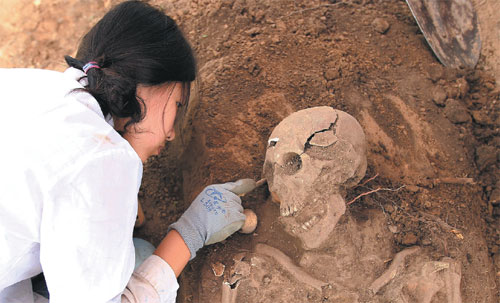The Use of Flora and Fauna in Prehistoric Culture: The Aspects of Archaeobotany and Zooarchaeology
Introduction
The study of prehistoric cultures provides valuable insights into the lives of our ancestors. Two important fields of research, archaeobotany and zooarchaeology, focus on the use of flora and fauna in prehistoric societies. By analyzing plant and animal remains found in archaeological sites, researchers can uncover information about the diet, environment, and cultural practices of these ancient civilizations.
Archaeobotany: Understanding Prehistoric Plant Use
Archaeobotany is the study of plant remains found in archaeological contexts. By examining plant remains such as seeds, pollen, and charcoal, archaeobotanists can reconstruct the plant species that were utilized by prehistoric societies. These plant remains can provide insights into various aspects of prehistoric cultures:
- Diet: Analysis of plant remains can reveal what types of plants were consumed by prehistoric communities. This information helps us understand the nutritional aspects of their diet and how they adapted to their environment.
- Domestication: Archaeobotany also helps in identifying the domestication of plants. By studying changes in seed size and morphology, archaeologists can determine when and where plants were first cultivated.
- Trade and Exchange: The presence of non-local plant species can indicate trade and exchange networks between different prehistoric communities.
- Medicinal and Ritual Use: Certain plants may have been used for medicinal or ritual purposes. Archaeobotanical analysis can shed light on the cultural practices and beliefs of prehistoric societies.
Zooarchaeology: Insights into Prehistoric Animal Exploitation
Zooarchaeology focuses on the study of animal remains found in archaeological sites. By analyzing bones, teeth, and other animal remains, zooarchaeologists can reconstruct the animal species that were utilized by prehistoric societies. This field of research provides valuable information about prehistoric animal exploitation:
- Diet and Subsistence Strategies: The analysis of animal remains helps in understanding the diet and subsistence strategies of prehistoric communities. It reveals what animals were hunted, domesticated, or used as a food source.
- Technology and Tool Use: Animal bones can provide insights into the tools and technology used by prehistoric societies. For example, the presence of butchered bones can indicate the use of cutting and scraping tools.
- Environmental Reconstruction: Animal remains can also provide information about the environment and climate in which prehistoric communities lived. By studying the distribution of animal species, researchers can reconstruct past ecosystems.
- Social and Cultural Practices: The presence of certain animal species can indicate social and cultural practices. For example, the use of animal bones in rituals or as decorative items can reveal aspects of prehistoric belief systems.
Interdisciplinary Approaches
Archaeobotany and zooarchaeology often work together in interdisciplinary research projects. By combining the analysis of plant and animal remains, researchers can gain a more comprehensive understanding of prehistoric cultures. This collaboration allows for a holistic interpretation of the relationship between humans, plants, and animals in the past.
Conclusion
The study of archaeobotany and zooarchaeology provides valuable insights into prehistoric cultures. By analyzing plant and animal remains, researchers can reconstruct the diet, environment, and cultural practices of ancient civilizations. This interdisciplinary approach enhances our understanding of the relationship between humans and the natural world in the past, and sheds light on the complex ways in which flora and fauna were utilized in prehistoric societies.
